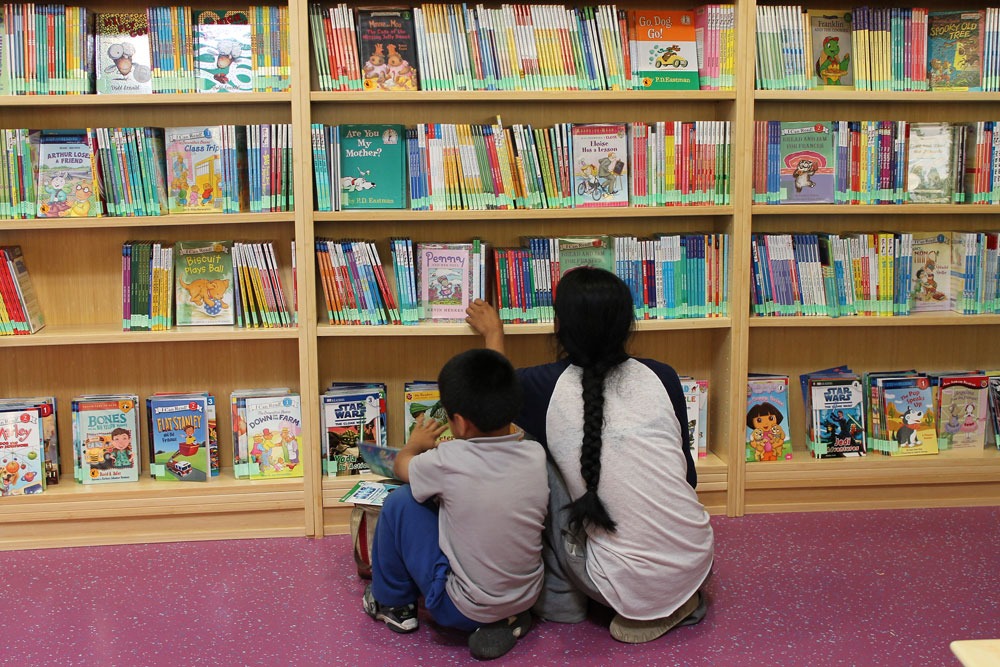
October 24, 2019; LitHub and the Boston Globe
Few spaces in American life are truly democratic, but there’s one place that welcomes all comers: the public library. Despite years of cries about how books are obsolete and public dollars are being wasted, these spaces have persisted, even growing in popularity.
In fact, the very people often denounced as the source of libraries’ demise (as they are denounced for the demise of so many things) seem to particularly appreciate this resource. A 2017 study from the Pew Research Center showed that nearly 90 percent of “millennials” said they depend on libraries as a source of reliable, useful information. (They’re also just more likely to read books.)
Yet the myths of waste or obsolescence persist. Eric Klinenberg examines these trends in his recent book Palaces for the People, and asks a critical question: why don’t they get more public attention and funding? From 2006 to 2017, according to Library Journal, libraries received less than $3 billion from private philanthropy. Klinenberg claims that government funding for them is also down: “When hard times come, [library] budgets get trimmed first.”
Part of the blame might lie with staff capabilities: many libraries’ staffs do not have someone who understands grant-writing or donor development, which makes it hard to raise funds. The Foundation Center launched a data and capacity-building tool in 2017 to help libraries overcome this hurdle.
But part of it, says Klinenberg, is the persistent misunderstanding of the necessary role libraries play, helping people elevate themselves and teaching kids “what it means to borrow and take care of something public.”
Sign up for our free newsletters
Subscribe to NPQ's newsletters to have our top stories delivered directly to your inbox.
By signing up, you agree to our privacy policy and terms of use, and to receive messages from NPQ and our partners.
The Boston Public Library recently completed a multimillion-dollar renovation that included more public and event space, a WGBH radio stage, and more. The renovation helped the library showcase its role as a gathering space for events and programs, a role libraries are emphasizing more and more in recent years. Cathy Piantagini, director of the nearby Somerville Library, says, “People view it as a way they connect with the rest of the city.”
“You can Google anything you want, but if you want it done right, ask a librarian,” another Bay State library director added.
Massachusetts had the second-highest rate of library visits per capita in 2017, the most recent year for which data is available from the Institute of Museum & Library Sciences (IMLS). Ohio took first place, with 6.25 visits per state resident; the next 15 states came in somewhere between five and six. Even at the bottom of that list, Arkansas and Mississippi both averaged more than one visit per resident that year. So statistically, this is a resource every resident uses. Yet most states spent less than $2 per capita to keep the doors open.
A 2012 data survey by IMLS showed that over ten years, visitation and program attendance went up 10.1 and 16.7 percent, respectively, but revenue per capita went down from every source except local government. Local government is the biggest source of library funding—often to the tune of over ninety percent of operating revenue.
But like the most optimistic of “nonprofit unicorns,” librarians and patrons are determined to support the institutions they love. DonorsChoose lists over 11,000 projects related to libraries; GoFundMe lists over 12,000. NPQ’s own Steve Dubb wrote in January about how libraries have taught staff to administer Narcan, offer sanctuary, and serve as hubs for social workers and other sources of support. Bringing a community together around the idea of free, accessible learning and communal support is something that can’t be oversold.—Erin Rubin













